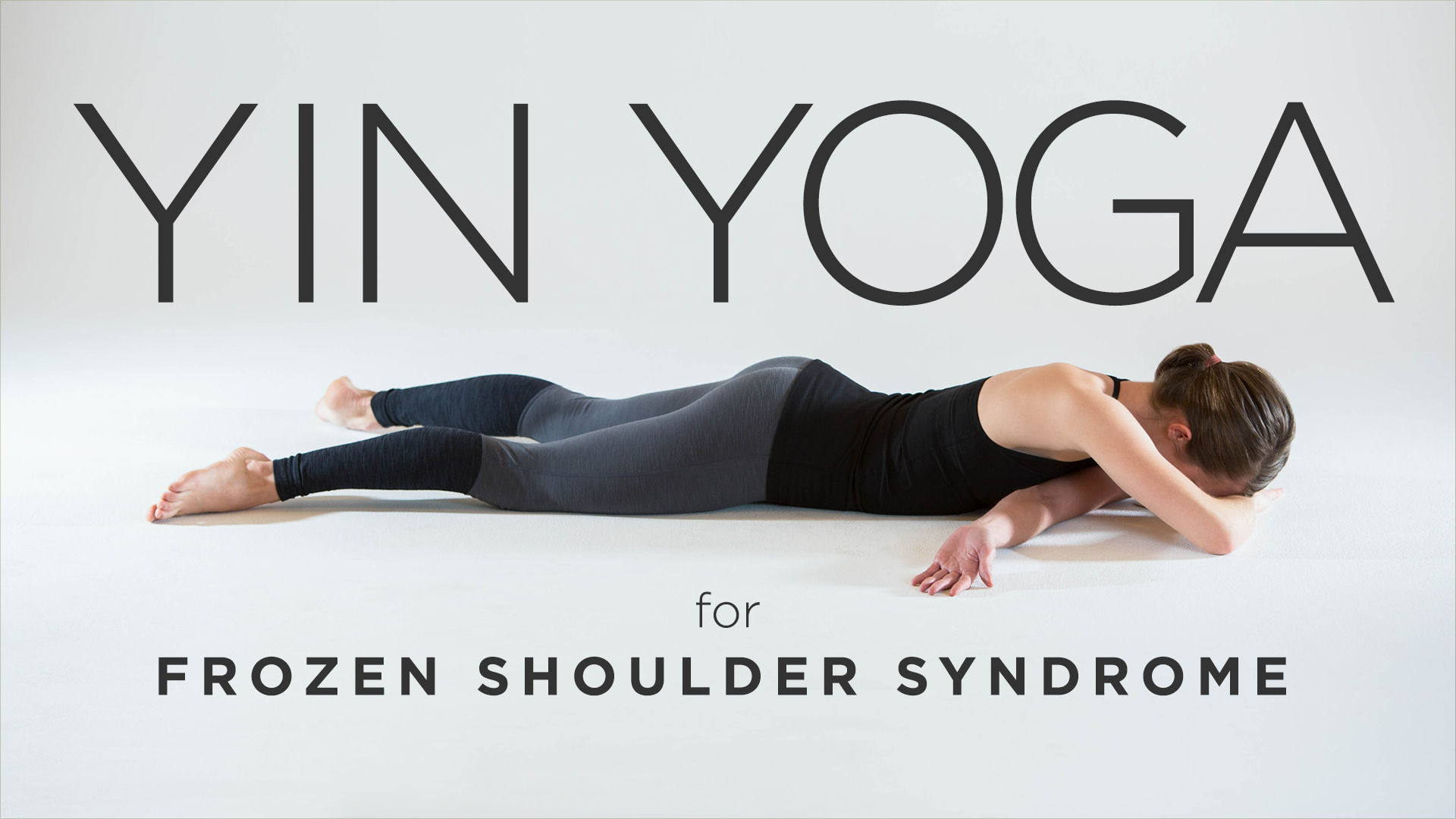By Dr. Rita Khanna


Yoga & Frozen Shoulder
Frozen shoulder is also known as adhesive capsulitis. A person with adhesive capsulitis has inflammation of the
shoulder joint. The inflammation causes joint stiffness and decreased range of motion of the joint. As the condition worsens, the range of motion in the shoulder significantly reduces. It is as if you stitched the folds of a tablecloth, you wouldn’t be able to open the cloth up to its full size.
Diabetes, shoulder trauma (including surgery), a history of open-heart surgery, hyperthyroidism and a history of cervical disk disease are all associated with an increased risk of this problem.
BASIC SHOULDER INTRODUCTION
The shoulder is the most movable joint in the body. However, it is an unstable joint because of the range of motion allowed. It is made up of three bones which are connected by muscles, ligaments and tendons. The round end of your upper arm bone (humerus) fits into a shallow groove on your shoulder blade (scapula). The shoulder is a ball-and-socket joint. It is easily subject to injury because the ball of the upper arm is larger than the shoulder socket that holds it. Generally socket is little bigger than the size of the ball, so that ball can fit inside the socket and easily move around. One way of picturing this joint is to think of a golf ball on a tee. Therefore, the exercise of moving shoulder up and down, forward and backward, arms rotation in a circular motion or hinge out and up away from the body are very important to keep the shoulder mobile.
YOGIC EXERCISES
The exercises below are a boon for frozen shoulder & neck pain. These help you to restore full & pain free range of motion and function to your shoulder. The good thing about these exercises is that these involve easy & slow stretching movements that require you to focus on your body. This focus will help you to pay attention to your body and any pain that may come from the stretching. It helps to warm up your shoulders and their smooth movement. It is important to be careful, patient and persistent. Initially do these exercises multiple times a day by connecting body, breath & mind. These will bring positive energy into the shoulders.
SITTING POSITION- VAJRASANA
1. Keep your arms at the sides, keep them straight and loose. Raise shoulders up and down with the breath. Up is inhale down is exhale. Do not bend the elbows. Repeat the process 7-10 times.
2. Rotate the shoulders back to front 7-10 times, then reverse, front to back 7-10 times, do with the breath. Up is inhale down is exhale. Arms are hanging loose at the sides.
3. Fingers on the shoulders, rotate them front to back7-10 times and then reverse 7-10 times. Do with the breath. Up is inhale down is exhale. Start out with very small circles and then make then bigger and bigger circles as your shoulder becomes free.
4. From Vajrasana gently stand on the knees. Cross the arms in the front, inhale, raise them up over the head & exhale. Bring them down from the sides. Repeat 7 times clockwise & 7 times anti clockwise. Do the same thing from the sides.
5. Now sit back in Vajrasana. Inhale and raise your arms up over the head, press the palms together as hard as you can, then keep pressing them & bring them down in front of the chest, while exhaling. Repeat 7-10 times.
6. Arms are apart, palms are facing towards each other, fingers together. Put anti pressure on the upper arms & bring the palms closer to each other at a distance of 6 to 8 inches while inhaling, then relax. Do 7-10 times.
7. Inhale, take your right arm down over the right shoulder behind the neck. Exhale, take your left hand from down behind the back. Try to hold your hands in a hook shape & pull them in the opposite. Try to remain in the position to the count of three breaths. Then reverse the position & do the same with the other side. Repeat 3 times each side (use a belt if hand does not come half way down the back).
8. Bring right arm in front of the chest by bending the elbow. Cross the left arm under the right arm. Hook the elbows and place hands as close as you can in a prayer position. Keep the hands near the nose. Do normal breathing. Now start with the left arm. Repeat 3 times each side.
Courtesy: Dr. Rita Khanna




